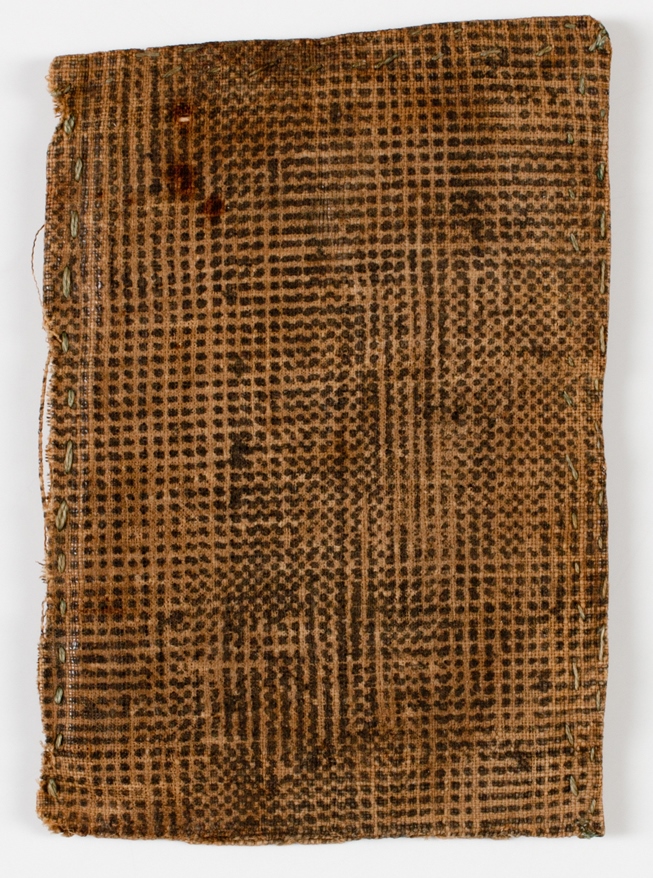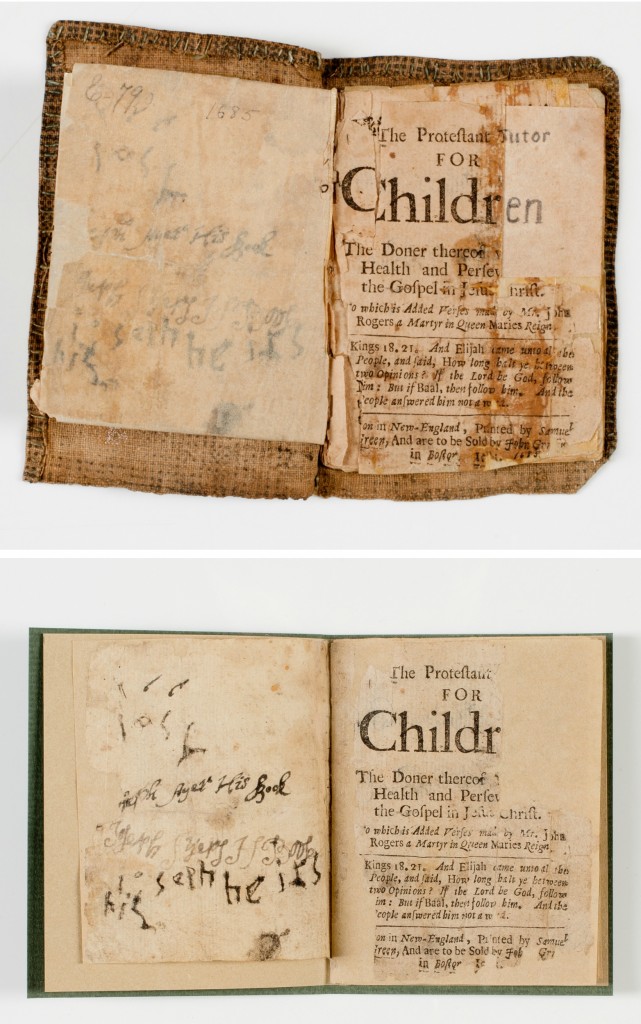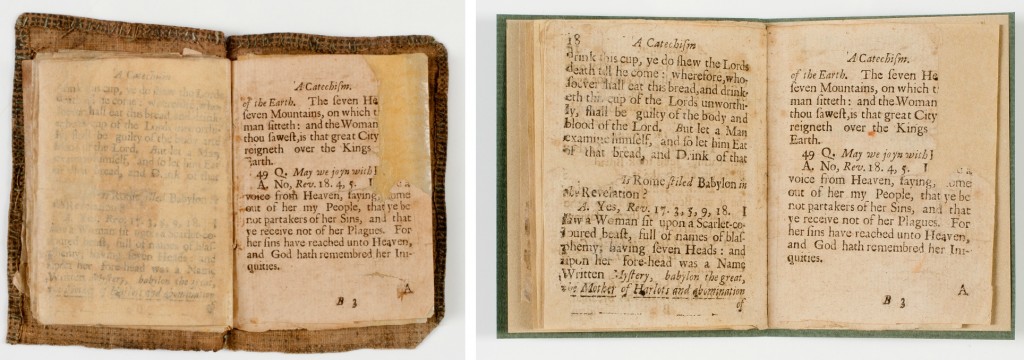
Recently, I had the opportunity to treat a very special item from our Reserve collection as part of our Save America’s Treasures grant. The Protestant Tutor for Children is attributed to Benjamin Harris and was printed by Samuel Green in Boston, 1685. Thought to be a precursor text to the New England Primer, it is the first and only known extant copy printed in New England. AAS has been in ownership of this pamphlet since at least 1885.
Upon examination, I found this rare pamphlet to be severely mutilated, with paper tears, losses, and stains. Hand-stitched into a dear little cloth wrapper, and with every page backed with glassine tape, it was evident that someone in its almost 330-year life had cared about preserving it. A missing section of the title page had been filled in with new paper and text neatly written in pencil. I imagine they probably felt they were doing a great job of it. There was ink manuscript throughout, declaring ownership (William Giddons and Joseph Ayers, specifically). Overall, charming, but in rough shape!

What is required first in treating such an object is thorough documentation. A detailed description of its condition is written up and captured visually with digital photography. In this case, every page was shot both before and after treatment. The pamphlet was then disbound, and the pages were cleaned of surface grime before washing. All of that glassine had turned yellow and obscured the text. It had certainly kept the pamphlet intact, but it had to go! Fortunately, the adhesive on glassine tape is water soluble, and was easily removed in a water bath. After the tape floated off and the acids were removed from the paper, it was alkalized with a magnesium solution, and when dry, re-sized with gelatin. It was now time to reattach all the little bits that came apart when the glassine came off. Usually we mend tears and fill losses with Japanese tissue and wheat starch paste, but due to the extent of damage this was a better candidate for a pulpfill, which tends to be more seamless. We’d just spent the month doing pulpfills, and I’d saved this one for last.

Making fills with pulp is fun, and creative, even kind of artsy – one tears into small pieces a variety of high-quality handmade papers (old and new) in an attempt to match the hue and tone for the area you are repairing. These are whirred up in a blender with water (passersby are unable to resist the smoothie joke) until you have a suitably blended paper pulp. It can take a bit of tweaking, but is highly satisfying when you’ve gotten it right. We then fill a squeeze bottle with the pulp and apply it to the wet object on Hollytex (a synthetic material which allows water to flow through, but prevents sticking) and blotters. (To see what this process looks like, click here.) It is then dried under pressure between felts.

After the paper repairs, the pamphlet was re-sewn into a new paper wrapper because the original wrapper was too fragile for re-use. Both the old wrapper, and the original threads that were cut to release it, have been saved with the pamphlet in an enclosure, along with some notes about the provenance that were found with it. The “after” photos were taken, and it was returned to our cool, dark, secure stacks, where it will remain safe and sound for generations to come.
